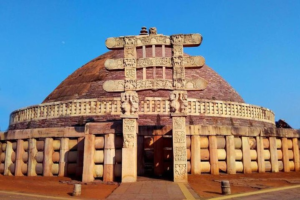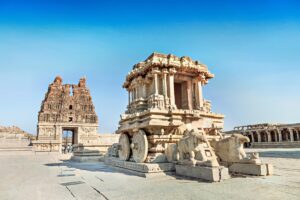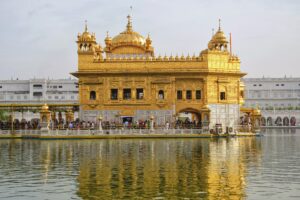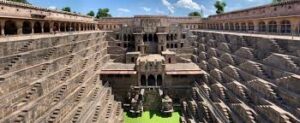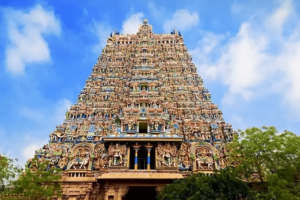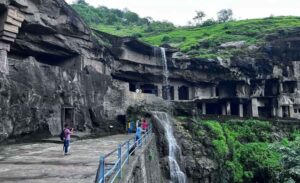Are you someone who is bored of limiting India’s architectural grandeur to the Taj Mahal only? Want to dig in deeper? Or maybe admire the beauty of some of the finest works by the artisans. The construction of the Taj Mahal is surely aesthetically pleasing, but India is home to many other wonders of architectural beauty and fine detailing. While the opinion might differ from person to person, Itihaas ki Khoj is here with its version of ‘The 7 Wonders of India.’
India’s Timeless Treasures: The 7 Wonders of India Unveiled
Embark on a journey through India’s most iconic marvels, where history, culture, and architectural brilliance come alive.
1. SANCHI STUPA
The grand, white, stone-built dome, famously known as the Sanchi Stupa, is in the district of Sanchi town in Madhya Pradesh. Commissioned by the Mauryan Emperor Ashoka, this stone-built stupa was constructed in the 3rd century BCE after his newfound acceptance of Buddhism.
A marvel of Buddhist art and architecture, it is home to the relics of Buddha and his deciples.
I always thought that it looked similar to the Gol Ghar in Patna, Bihar, although the Gol Ghar is a granary.
The gateways are the most remarkable and distinctive features of the Sanchi Stupa. There are 4 limestone gateways, each 10 m in height and 7 m in width, with carvings of the teachings and life of Buddha. These gateways are considered a marvel of Indian ancient architecture and have inspired many generations of monuments and cultures.
A symbol of faith, art, and culture, the Sanchi Stupa has become a significant pilgrimage site, attracting followers of Buddhism from afar. On the 7 Wonders of India list, we place Sanchi Stupa at the 7th number.
2. HAMPI
Hampi predates the kingdom of Vijayanagar, and its mythology dates back to the Ramayana as well. The Vanar Sena of Lord Rama in the Ramayana belonged to Hampi.
Presently, the Hampi monuments are a UNESCO World Heritage Site and are a subset of the Vijayanagara ruins.
Most of the monuments are Hindu, with public infrastructure such as water tanks, temples, and markets depicting Hindu deities and Hindu texts. There are also six Jain temples and a mosque (Islamic invasions). The architectural style is Dravidian.
We place this historical monument in the 6th position on our list.
3. CHARMINAR
In the 16th century, Hyderabad was witnessing a devastating plague. This magnificent monument emerged as a result of all the prayers made for the plague to end. Built by Muhammad Quli Qutb Shah, the 5th Sultan and founder of Hyderabad, and devastated by the effects of the plague, he vowed to build a magnificent building if his prayers were answered.
Charminar has now become an integral part of the city, as it has witnessed countless historical events, processions, celebrations, etc. As the name suggests, the building has four towering minarets.
The combination of white marble with black granite creates a striking contrast, making it more appealing to the eyes. Surrounded by the local markets on its sides, Charminar looks the most captivating in the sunset light and during the night when it is illuminated.
This fine architecture is a blend of Indian, Islamic, and Persian styles and reflects cultural diversity, bringing it to the 5th position, earning it a place among the 7 Wonders of India, and marking it as one of the most iconic Indian monuments.
4. GOLDEN TEMPLE
Situated in the ‘City of Guru,’ this place of worship is truly a golden jewel among Indian monuments, both metaphorically and literally. The Golden Temple of Amritsar is one of the holiest sites for Sikh devotees and is also recognized as one of the 7 Wonders of India.
The Gurudwara was built by the fourth Guru, Guru Ram Das, under the guidance of Guru Amar Das, the third Guru. He envisioned a land where people of all castes, creeds, and religions could live together in unity. To symbolize this, he built a pool, the Amrit Sarovar (a pond of nectar), around which the temple was constructed
The 5th Guru, Guru Arjan Dev, built the Harmandir Sahib (now known as the Golden Temple) in white marble by the side of the pool. The temple has gone through multiple destructions and has been restored each time.
In 1830, Maharaja Ranjit Singh rebuilt the temple in marble and copper and had it gold-plated, thus gaining its name.
The water in the pool reflects the shadow of the temple, giving it a rather symmetrical look.
A temple of exquisite beauty and a rather more beautiful purpose, the Golden Temple preaches humanity and unity. It earns the 4th position on our list.
Also read: – https://itihaaskikhoj.in/11-historical-temples-of-south-india/
5. CHAND BAORI
The Raja had faith in Harshat Mata, the Goddess of Joy and Happiness, and therefore a temple was built, which served as a pilgrimage for the worshippers. While the pilgrims came to seek blessings in the temple, they found comfort in quenching their thirst and then resting here. However, attacks by Mahmud Ghazni and the Mughals left the temple in pieces.
This highly geometrical step well secures the 3rd position in our quest to find the 7 Wonders of India, due to its symmetrical beauty.
6. MEENAKSHI TEMPLE
Situated in the lap of Madurai city, the temple is considered to be as old as the city itself. The most striking feature of this temple is its ornate Gopurams, which are richly decorated with vibrant and richly coloured sculptures. These are the carvings depicting various Hindu deities, mythological creatures, and other celestial beings, symbolising the Heavenly abode of the gods.
The overall colour scheme of the Meenakshi Temple is designed to be visually striking and to draw maximum attention from visitors. The combination of these bright and vibrant colours brings Meenakshi Temple to the second position on the list.
7. AJANTA AND ELLORA CAVES
The Ajanta and Ellora Caves, part of the 7 Wonders of India, showcase the country’s rich cultural heritage and artistic brilliance. The Ajanta Caves, a group of 29 caves in a horseshoe shape, date back to the 2nd century BCE and the 6th century CE, and are renowned for their vivid paintings and sculptures that depict Buddhist stories. In contrast, the Ellora Caves, a linear cluster from the 5th to the 10th century CE, are celebrated for their monumental rock-cut architecture and diverse religious representations, making both sites invaluable treasures among the 7 Wonders of India.
While these caves showcase exceptional rock-cut architecture, sculpture, and paintings, they also provide valuable insights into the history of India.
While the Ajantas talk about the life of Buddha and other Jataka tales, the Elloras focus on Buddhist, Hindu, and Jain monuments as well. (Fact: the Ellora caves are featured on the back side of the Rs. 20 note.)
The beauty of these caves is undeniable and exceptional, contributing to their first position on our list.
CONCLUSION
This was our version of the ‘7 Wonders of India’. While some people may agree with it, others might have a different opinion, but still, one cannot deny the beauty and aura of these majestic monuments. Let us know in the comment section if we missed any, and we will see you guys in the next blog!


